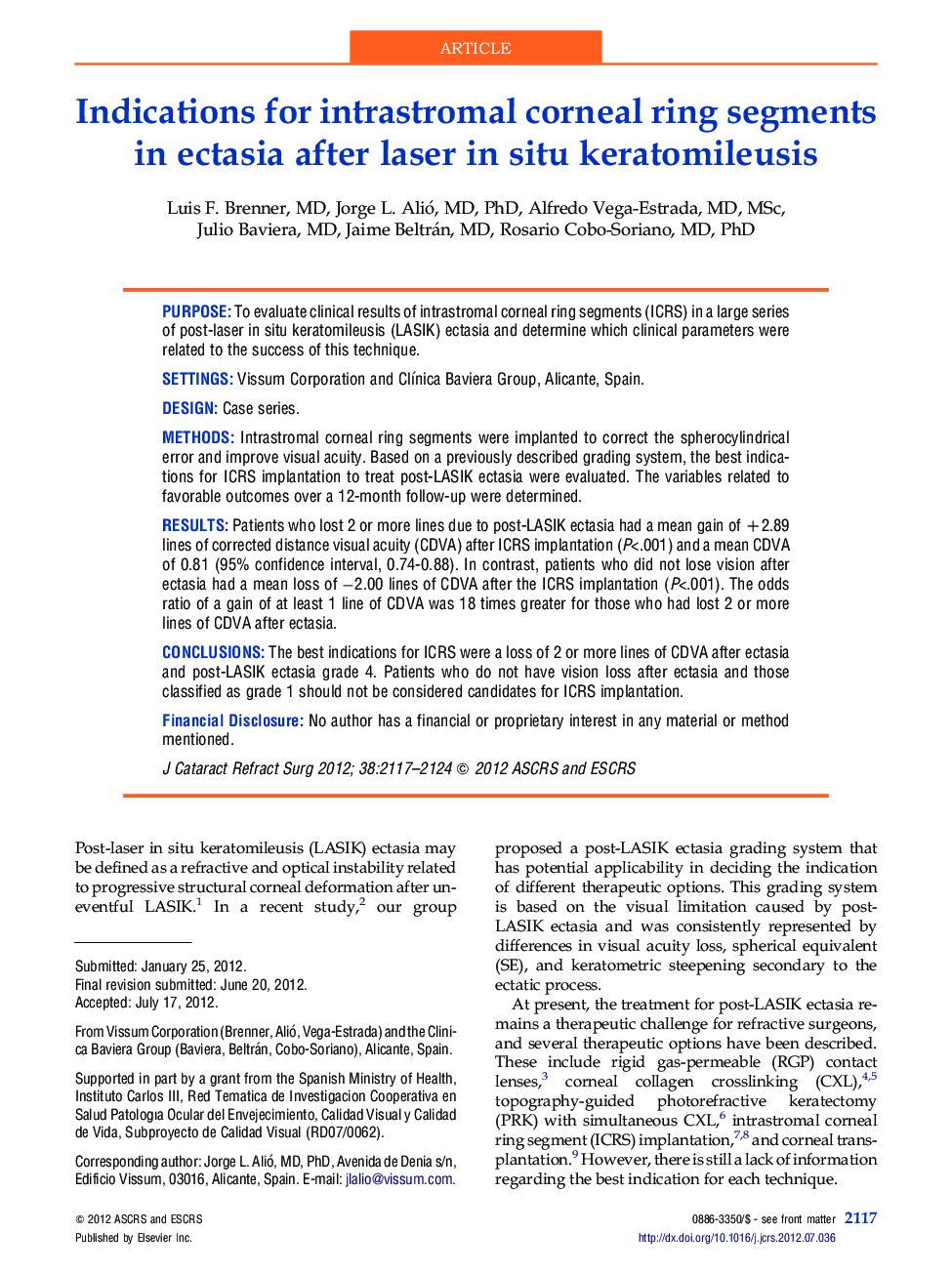| Article ID | Journal | Published Year | Pages | File Type |
|---|---|---|---|---|
| 4017761 | Journal of Cataract & Refractive Surgery | 2012 | 8 Pages |
PurposeTo evaluate clinical results of intrastromal corneal ring segments (ICRS) in a large series of post-laser in situ keratomileusis (LASIK) ectasia and determine which clinical parameters were related to the success of this technique.SettingsVissum Corporation and Clínica Baviera Group, Alicante, Spain.DesignCase series.MethodsIntrastromal corneal ring segments were implanted to correct the spherocylindrical error and improve visual acuity. Based on a previously described grading system, the best indications for ICRS implantation to treat post-LASIK ectasia were evaluated. The variables related to favorable outcomes over a 12-month follow-up were determined.ResultsPatients who lost 2 or more lines due to post-LASIK ectasia had a mean gain of +2.89 lines of corrected distance visual acuity (CDVA) after ICRS implantation (P<.001) and a mean CDVA of 0.81 (95% confidence interval, 0.74-0.88). In contrast, patients who did not lose vision after ectasia had a mean loss of −2.00 lines of CDVA after the ICRS implantation (P<.001). The odds ratio of a gain of at least 1 line of CDVA was 18 times greater for those who had lost 2 or more lines of CDVA after ectasia.ConclusionsThe best indications for ICRS were a loss of 2 or more lines of CDVA after ectasia and post-LASIK ectasia grade 4. Patients who do not have vision loss after ectasia and those classified as grade 1 should not be considered candidates for ICRS implantation.Financial DisclosureNo author has a financial or proprietary interest in any material or method mentioned.
